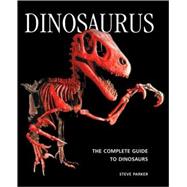
| Foreword | |
| Introduction | |
| Early Life | |
| Conquerors of the Land | |
| The First Dinosaurs | |
| The Small Meat-eaters | |
| The Great Predators | |
| Ostrich Dinosaurs | |
| The Giants | |
| Bird-foot Dinosaurs | |
| The Duckbills | |
| The Boneheads | |
| Armored Dinosaurs | |
| Plated Dinosaurs | |
| Horned Dinosaurs | |
| Other Creatures of the Dinosaur Age | |
| After the Dinosaurs | |
| Main Fossil Sites | |
| Where to see dinosaurs | |
| Glossary | |
| Picture credits and Acknowledgements | |
| Index | |
| Table of Contents provided by Publisher. All Rights Reserved. |
The New copy of this book will include any supplemental materials advertised. Please check the title of the book to determine if it should include any access cards, study guides, lab manuals, CDs, etc.
The Used, Rental and eBook copies of this book are not guaranteed to include any supplemental materials. Typically, only the book itself is included. This is true even if the title states it includes any access cards, study guides, lab manuals, CDs, etc.